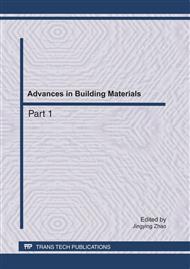p.1270
p.1277
p.1282
p.1287
p.1292
p.1297
p.1303
p.1309
p.1313
Improving the Predictability of Hiley Pile Driving Formula in the Quality Control of the Pile Foundation
Abstract:
Pile Dynamic Formulas are the oldest and frequently used method to determine bearing capacity of piles. The more recent method is based on the Wave Equation analysis and different formulations such as Case Mathod, TNO, CAPWAP and TEPWAP which were developed for pre-driving analysis and post-driving measurements applications. The major factors for the common use of the dynamic formulas have been due to their simplicity, cost effectiveness and applicability in various piling situations. However, in some literature the energy approach have been given an unfair reputation as being unreliable and less accurate than the more analytical or dynamic testing methods. One of the issues due to the poor performance of the dynamic formulas is that, historically, the hammer energy and the energy trasferred to pile had to be assumed. Nevertheless, with the advent of computers, new technologies are emerging with the advancement in construction industry. This has produced gradual improvements that have resulted in the dynamic method to be used on many projects with greater reliability. In this paper, a review of the different testing methods as well as pros and cons of the pile driving formulas are discussed. Also, an approach to improving the widely used Hiley dynamic equation is presented. This approach enables evaluation of the pile capacity to be made more accurately.
Info:
Periodical:
Pages:
1292-1296
Citation:
Online since:
May 2011
Authors:
Keywords:
Price:
Сopyright:
© 2011 Trans Tech Publications Ltd. All Rights Reserved
Share:
Citation:


